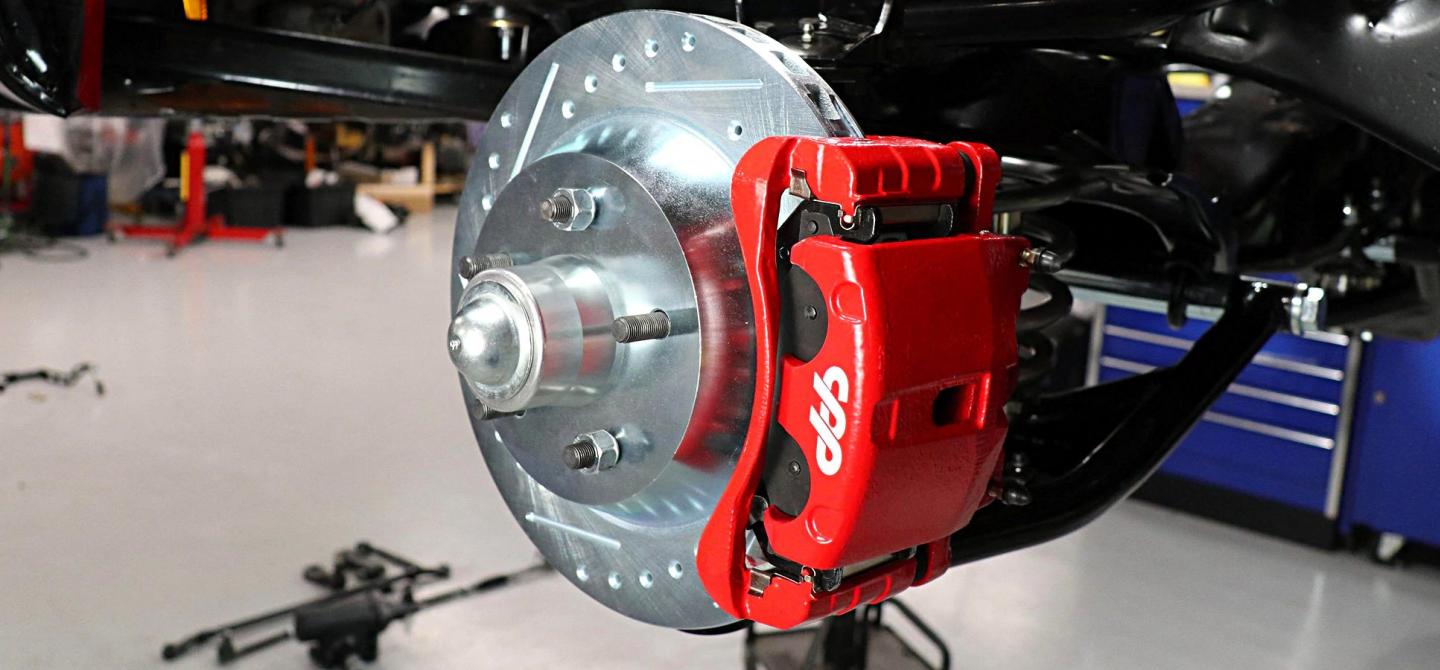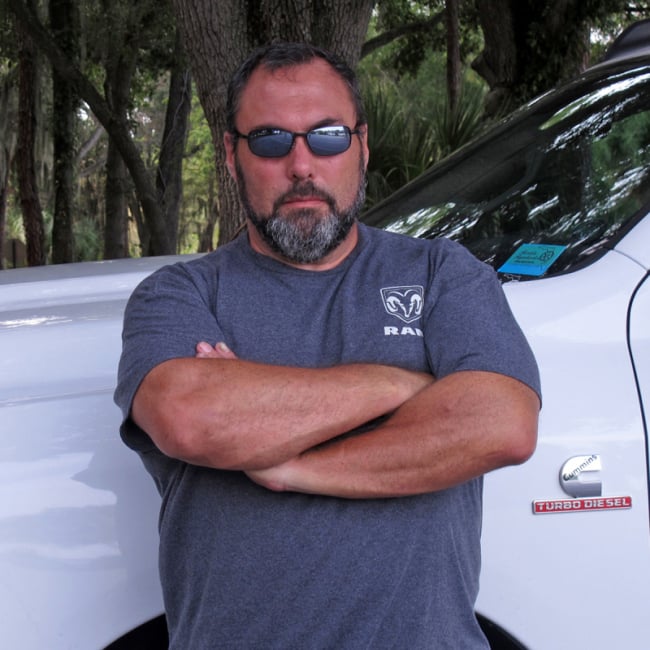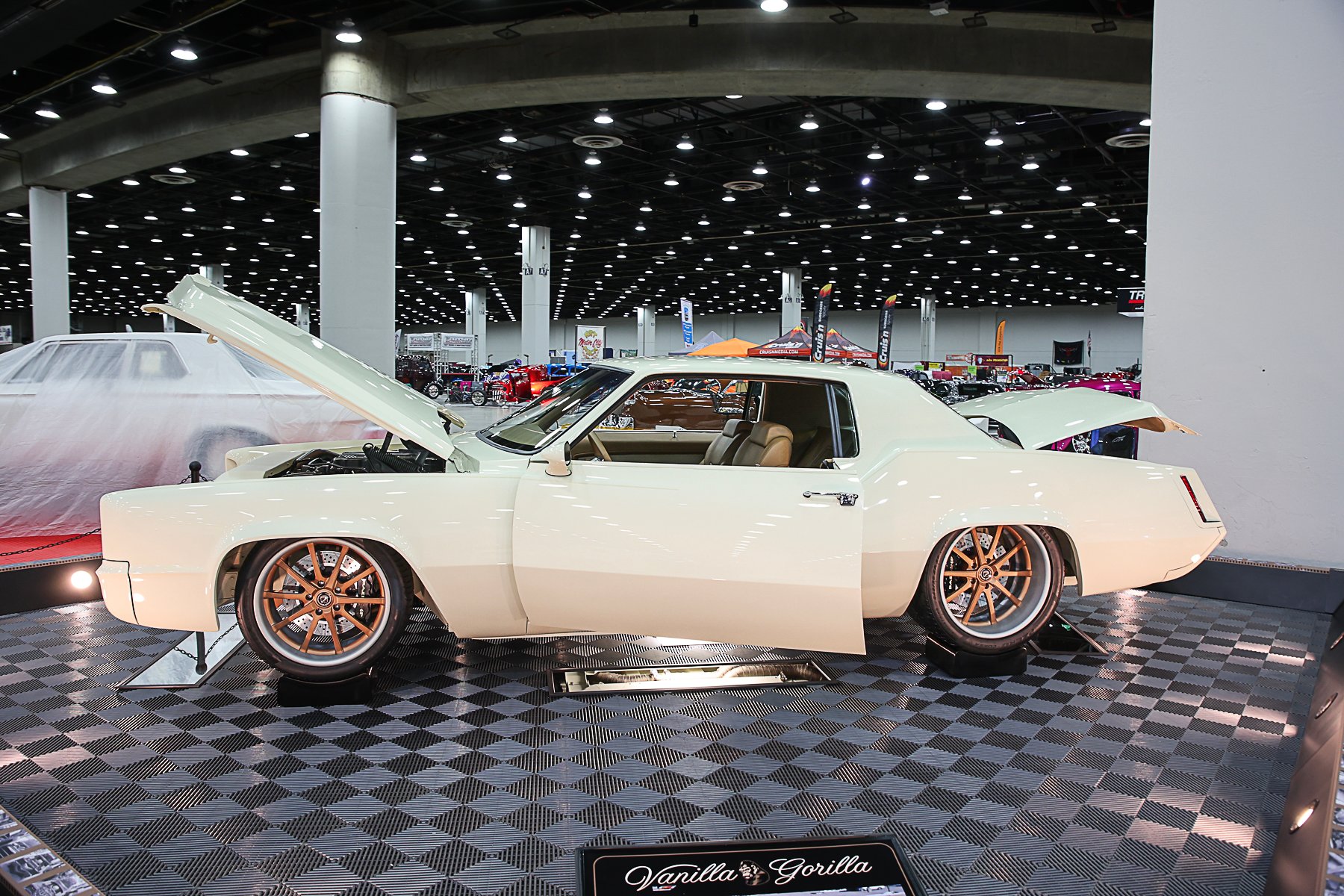If there is one constant in the automotive hobby, it’s that enthusiasts are not inclined to leave their classics in an unmodified state. Sure, there are some that prefer a restoration over a restomod. When it comes to powering our rides, we all want an engine that makes more horsepower than we actually need—if that’s even possible. However, for all the forward momentum we help our cars create, we also need to eventually bring that momentum to a stop. If you focus on making power and your brakes are not up to the task of bringing it all to a halt, bad things can and will happen.
While aftermarket brake kits are not usually the first thing many enthusiasts implement into the project, they are something that should definitely be considered. But, when choosing the “parts that bind,” you need to be sure they are chosen using an intelligent thought process, not just because a buddy recommends them. To help you get your bind on, we decided to get some solid information about upgrading brakes and turned to the folks at Classic Performance Products (CPP) to get some professional input.
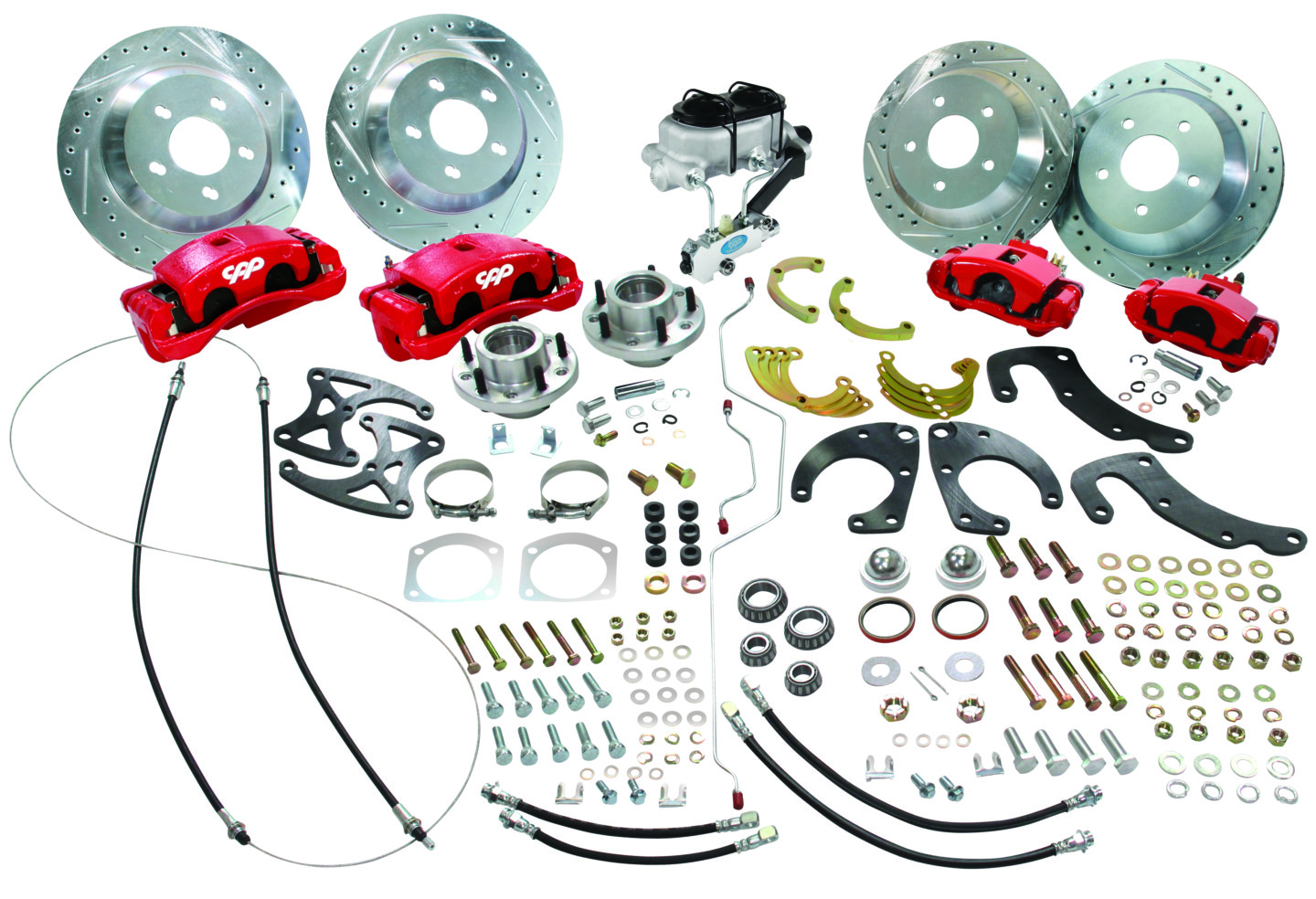
A well thought out kit like this one from CPP can take the confusion out of assembling a flawlessly working brake system for your ride. CPP big brakes are available in front or rear kits and complete front and rear kits (shown). Front and rear kits also include a four-wheel disc manual/power brake master cylinder and proportioning valve kit. These brake upgrade kits are available for 1955-70 Chevy, 1962-74 Nova, 1967-69 F-body, 1964-72 A-body, 60-87 Chevy/GMC C10, 64-70 Mustang, Mustang II, early Cadillac, Pontiac, and most popular applications.
Contrary to what many might believe, installing an aftermarket brake kit is not a sure-fire way to improve overall braking performance. In fact, approaching a brake upgrade with that mindset can actually be dangerous. What’s more, if common brake theory is not applied during the part-selection process, the upgrade is more likely to decrease overall system performance rather than improve it. For starters, a core principle that must be considered is brake balance (also known as bias).
The Fundamentals Of Whoa
Many enthusiasts who race cars competitively, surely understand proper brake balance. However, if you’re reading this and thinking, “why should I bother with a performance brake upgrade, my car is only used on the street?”, read on. Even if you are not driving your hot rod into a corner and achieving 1g of lateral force, you really should have a properly balanced brake set-up.
Let’s take a look at it this way; if all four corners are not operating as needed, you ain’t stopping in a timely fashion. Remember that the next time you have to panic stop while in traffic. Proper brake balance reduces the tendency of one or more of the wheels to lock up during panic braking. When correct brake balance is achieved, all four corners of the brake system are doing its fair share of the stopping. Luckily, most aftermarket brake companies have done the math and offer kits that are properly balanced for a particular application.
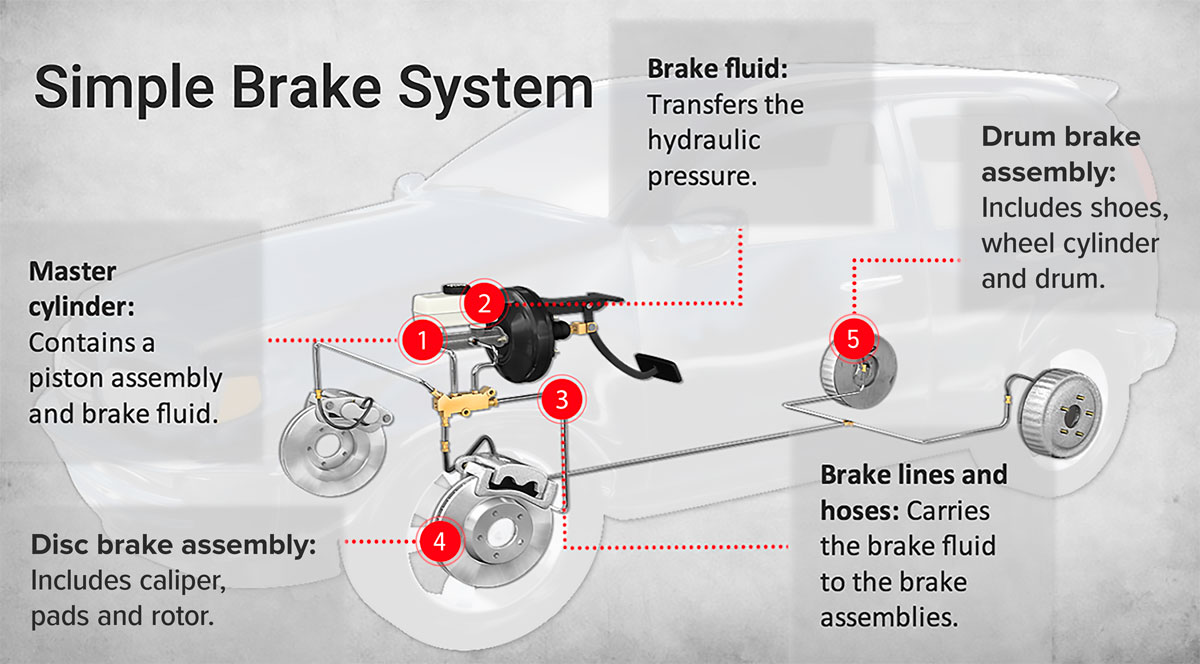
This basic brake-layout diagram shows how simple a classic car’s braking system really is. The yellow proportioning block (valve) near the front is what delivers brake balance (biasing) in this type of system.
If you’re not sure what is meant by brake balance, it refers to the ratio of braking force that is achieved between the front and rear axle. Contrary to what some might think, a 50/50 brake balance is not what you need to achieve. While that might sound strange, in reality, an optimal brake balance is achieved when the balance value matches the front-to-rear weight balance of the car. However, it only applies if the balance is optimized for a precise deceleration level. A basic rule-of-thumb is most rear brakes shouldn’t apply more than 40-percent of the stopping power at any given time (60/40 balance). Since most of a car’s weight is over the front wheels, if the rear braking is too strong, the rear brakes will lock up each time you hit the brake pedal. Many brake upgrade kits come complete with a proportioning valve to deliver the required balance.
Street Or Strip Stopping – Not Both
If you’re looking for a brake kit that will stop your car equally well on the street or track, you might as well stop looking. You will not find a kit that is a perfect system for both types of use. That is because both applications have vastly different requirements. I know what you’re thinking, “I have seen street/strip kits before.” Yes, but if you do find a street/strip system, it will be a compromise of the two requirements. It can still be a good system, just not optimized for either situation.
“Brakes made for specific types of racing are different than typical street-use brakes,” says Javier Nunez of CPP. “Street brakes are designed to work when cold, have a long service life, stop an overloaded vehicle, and work in all climates, etc. Racing brakes are usually designed to work and not fade when hot, use the lightest weight brake rotor possible, and also use the lightest caliper with the lightest brake pad that will last through a race.
“There are many brake kits available that do work “well” on the street and track, but it’s not the best brake for either type of driving. For example, our 13-inch big-brake kit works incredibly well on the street and good on a road course or autocross. The brake rotor can absorb a lot of heat energy and cool relatively quickly. What makes our 13-inch kit work so well is a combination of things. We use phenolic pistons to insulate the brake fluid from high heat caused by the brake friction. We also use a high-grade iron in the rotor to maintain higher levels of friction at high brake temperatures. In contrast, typical economy street rotors use a cheaper iron that loses friction when the temperatures increase.”
Before we talk about proper braking components, you first need to understand braking itself. A brake system works by converting kinetic energy into heat energy. As the caliper squeezes the brake pads against the rotor, heat is generated. The creation of that heat is what makes the car stop. To that end, more heat means more friction and stopping power. That is until a point of overheating is reached. When that happens, the brakes will no longer work at all (brake fade). If heat is a product of brake function but too much is a bad thing, that means your brake system also needs a way to remove that heat. Brake systems that can’t adequately dissipate heat will quickly educate the driver about brake fade.
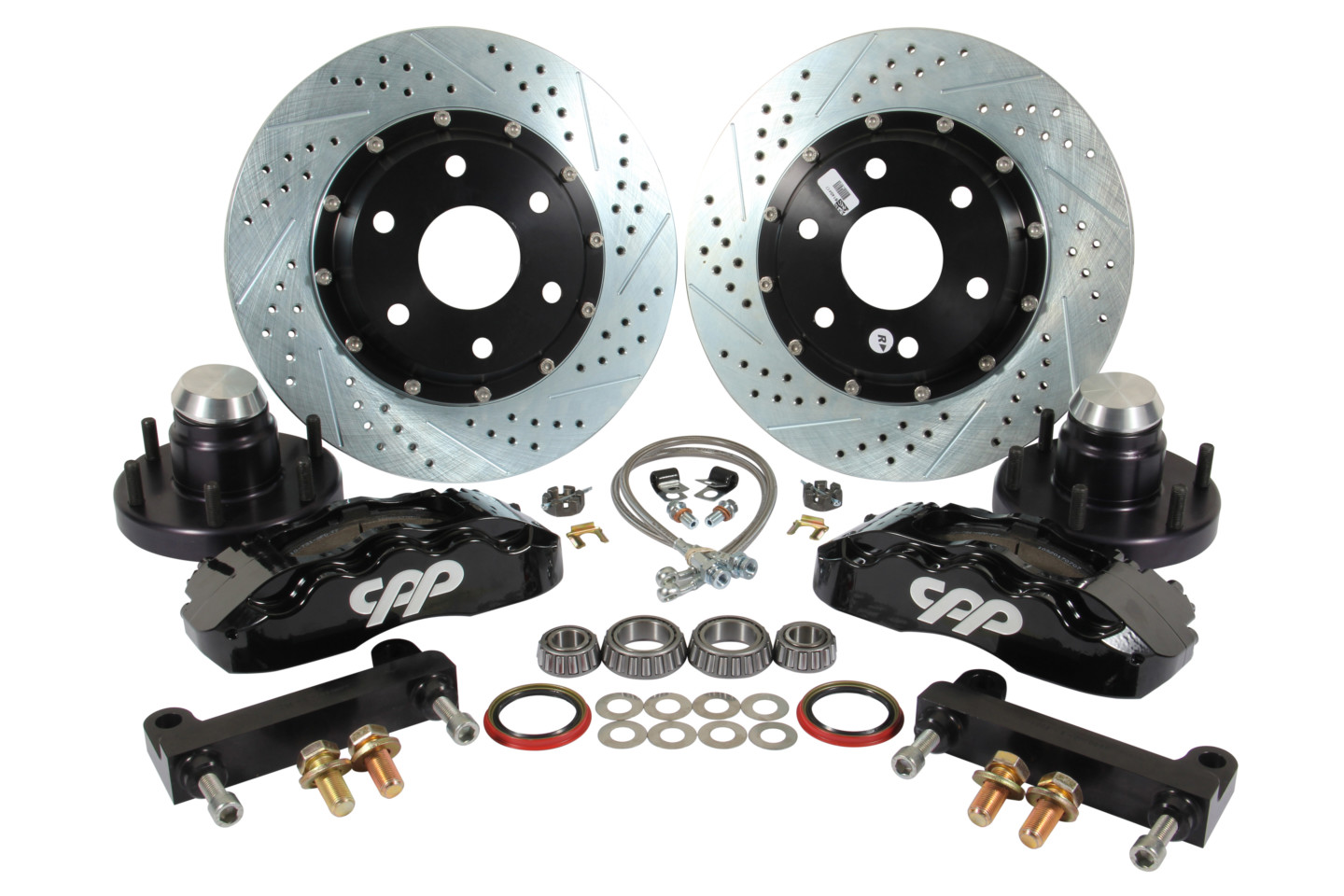
If you’re looking for a brake upgrade that will hurl your kids from the back seat to the dashboard like a $2.00 carnival ride, check out CPP’s version of the “you stop now” front brake kit. This Pro-Series comes with six-piston, fixed calipers, and two-piece drilled and slotted rotors.
When your classic car was new, if it came with disc brakes, the rotors were made of cast iron. This heavy material works well in a daily driver situation, as it has the great ability to survive the sustained heat cycling found in daily-grind traffic. OEM cast-iron rotors are typically designed with internal cooling fins to provide adequate cooling while in use.
However, rotors designed for racing use are usually a solid-rotor design with no cooling fins. Race-oriented rotors are designed to withstand a large thermal shock that happens during rapid deceleration. A disadvantage of a solid-disc-type rotor is that it is not able to survive the rapid heat cycling that is realized during normal street driving. Without a way to cool the rotors between stops, this could cause it to have an extremely short service life. The key to having properly working and relatively long-lasting brakes is to understand how to maximize braking ability without producing too much heat for too long.
Get Your Clamp On
When it comes to calipers, you have a myriad of options: single-piston, multi-piston, floating, or fixed. The choices seem endless. But what is the most important aspect to look for when deciding? According to Javier, “there are pros and cons to each setup. More pistons have more seals, more moving parts, and expose the brake fluid to more heat per-square-inch than single-piston calipers. Ultimately the caliper needs to apply a clamping force thru the pads onto the rotor. More pistons can spread the force more evenly across the brake pad.
“Floating calipers are thinner between the brake pad and the wheel, allowing for more wheel clearance. Fixed-mount calipers have a larger caliper body and are usually aluminum to help offset the weight gained from such a thick caliper. Most multi-piston calipers have a smaller piston area and require more brake fluid pressure to generate the same clamping force.”
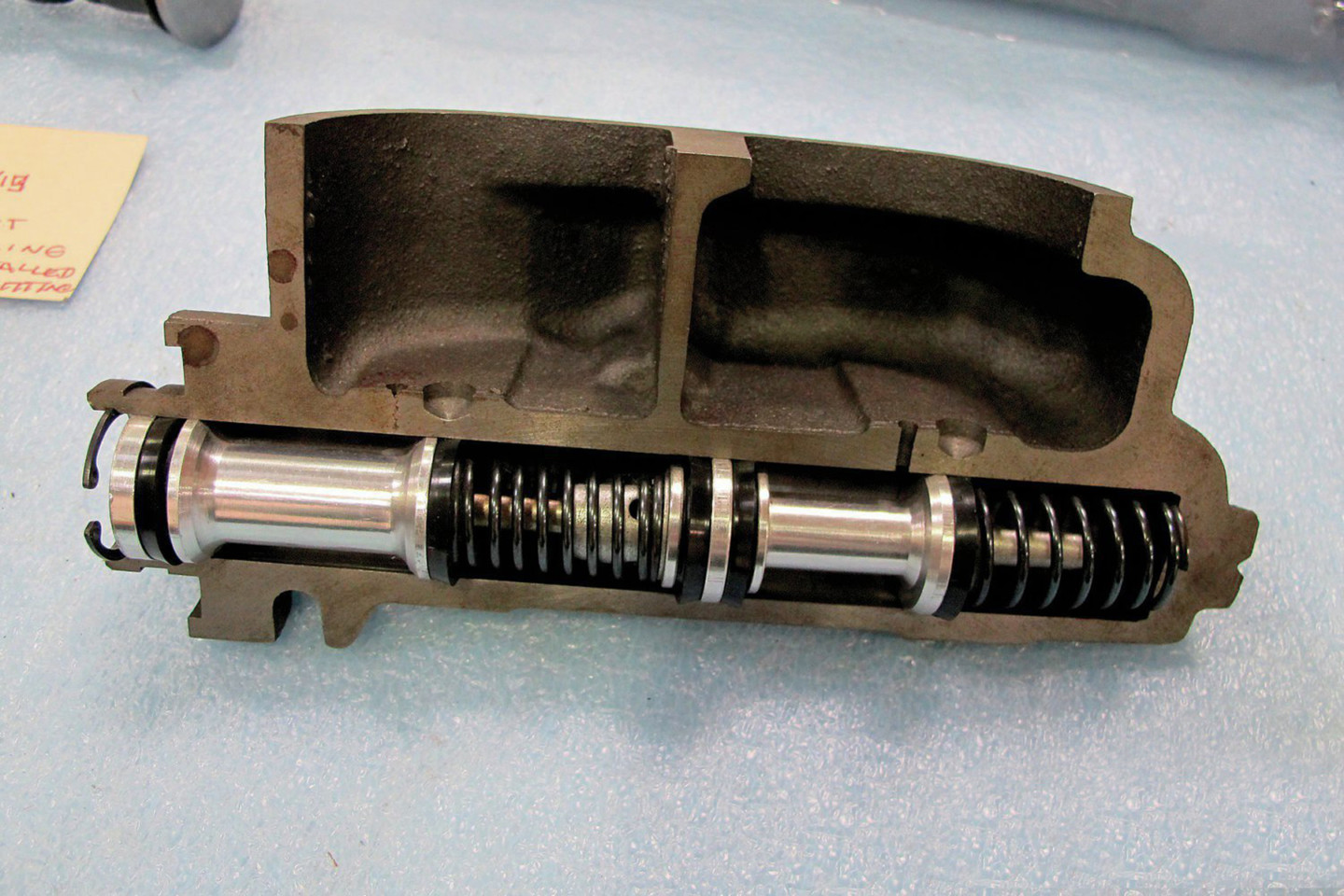
The master cylinder’s bore size plays a vital role in how the brakes “feel.” If the bore is too small, the master cylinder can’t make enough pressure to safely stop the car. A bore that is too large will not allow you to build enough pressure when you depress the brake pedal.
Bored Braking
Now we need to look at your master cylinder. When selecting a master cylinder, the most critical factor to consider is bore size. The bore size determines the amount of hydraulic pressure and fluid volume that will be sent downstream to the calipers. The actual amount of hydraulic pressure generated is based on the amount of force coming from the pedal or booster being divided by the area — in square inches — of the master cylinder bore. For example, a master cylinder with a 1-inch bore has .785 square inches of bore area. If the pedal or booster delivers 500 pounds of force to the master cylinder, the hydraulic pressure will be equal to 500 divided by .785, which would result in 637 psi going to the lines. The displaced volume capacity is then based on the length of the available stroke multiplied by the bore area. It’s the same formula that’s used to calculate engine displacement for one cylinder.
“It is very important to make sure you select the proper master cylinder bore size,” Javier confirms. “The most common bore sizes range from 15/16-inch to 1-1/8 inches. A smaller master cylinder bore size will produce less volume but higher pressure. Smaller bore master cylinders work best for manual brakes and many six-pistons calipers. The larger bore master cylinders produce higher volume, but lower pressure. The larger piston master cylinders work best on power-assisted brake applications and large single-piston calipers.”
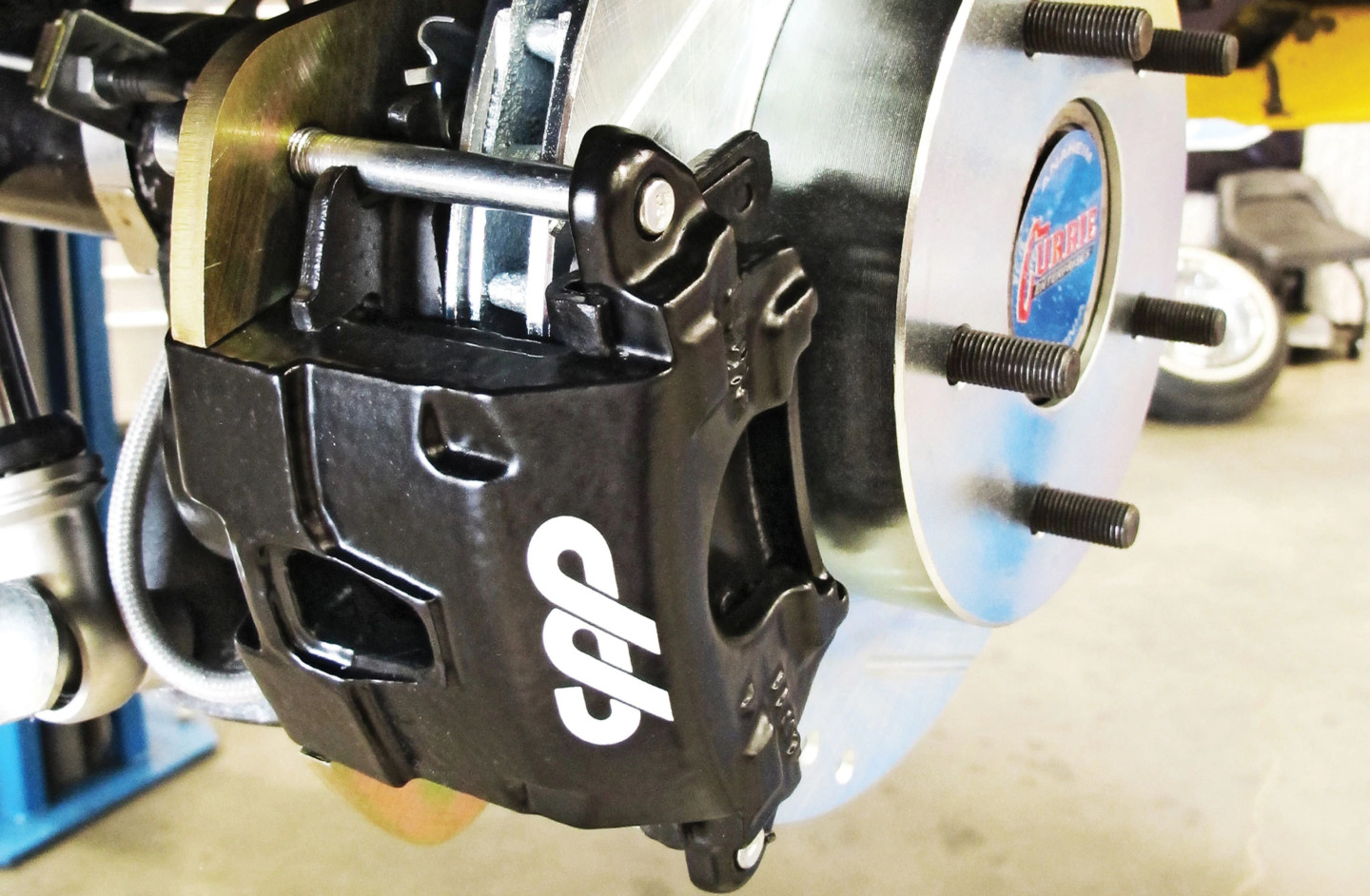
Most brake kits designed for street use come with a floating caliper (shown). This makes for a much easier install as the caliper floats on pins. With a fixed-caliper design, the caliper is rigidly mounted and must use shims during the install to get the caliper centered over the rotor. CPP offers kits with both mounting options.
Basically, you do not want to use a master cylinder with a bore so small the pedal runs out of travel without making enough pressure to safely stop the car. Conversely, don’t use a bore so large that you can’t step on the pedal hard enough to safely stop the car.
Deciding what brake kit is best for your application is not as hard as it sounds, the single easiest way to get a great working kit is to simply call someone — like Classic Performance Products — and get a recommendation from the tech line. The hard part of deciding what parts go together is done, all you need to do is install the parts.


